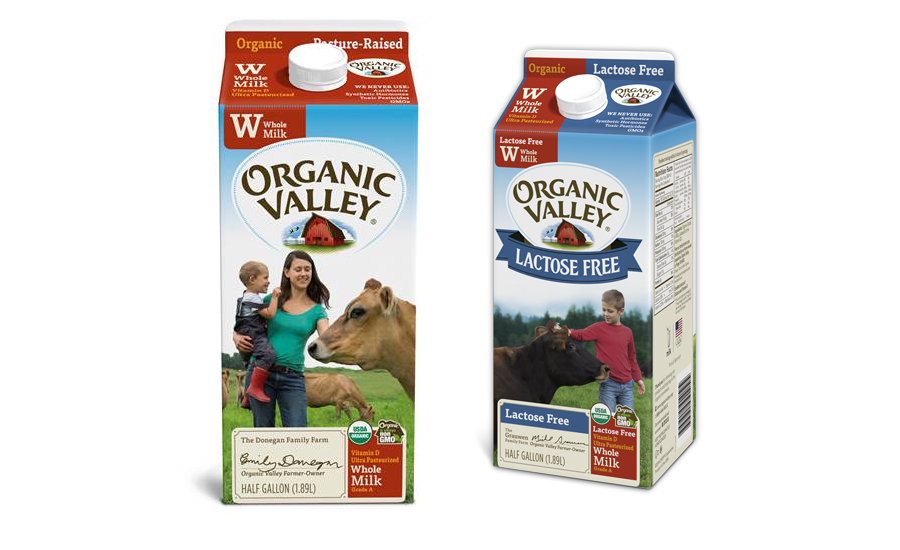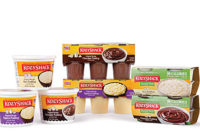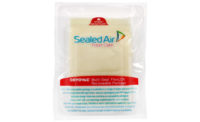Less than 10 years ago, writing “milk” on an average American grocery list meant one thing: a gallon of conventional white milk. Today when you open a refrigerator door you are likely to find a variety of dairy products: organic milk, lactose-free milk and flavored milk in the refrigerator at all times.
Dairy brands are well aware of consumers’ thirst for variety and have responded with an ever-expanding range of natural and value-add options. But with so many choices, how do brands get noticed and into consumers’ shopping carts?
Use the package to tell a story about your brand
The answer is to use the package to break out of the sea of conventional milk. For years, an eye-catching label helped brands stand out, but emphasis was on just communicating fat content: whole, skim or fat-free. Today, savvy dairy marketers are employing on-package storytelling, labels promoting occasion-driven consumption and unique carton sizes to drive emotional, visual and practical appeal for their products.
Consumers increasingly desire a brand relationship akin to friendship, with shared interests and lifestyles. Organic Valley smartly encourages this on its packages and digital channels. Across its milk product line (encompassing fat-free skim, omega-3 enhanced whole milk and several varieties in between), Organic Valley shows pictures of its farmers with their names printed directly on the carton. Online, it shares their stories through videos, pictures and articles. Consumers can further immerse themselves in this campaign by entering their ZIP codes at the top of Organic Valley’s Meet Our Farmers page so they can meet the very families supplying milk in their communities.
These people-first user experiences deepen brand loyalty by making an emotional connection to those who want to know where their food is coming from and who is making it – which is the vast majority of consumers.
The power of an informative label
The marketing and positioning of milk had a great push with the U.S. Food and Drug Administration’s (FDA) new nutrition label requirements released in May 2016. Instead of just making and getting safe, delicious milk to retailers, dairies can now communicate more directly with engaged consumers through their nutrition labels.
A few months after the FDA’s announcement, the Hartman Group released a survey revealing that 72% of people read nutritional labels, a figure that rises to 81% for respondents watching their weight. This is good news for brands who carefully formulate their products to meet certain dietary needs.
But there’s no need to leave it to chance that consumers will flip to the back of a package. Brands such as Arla have found success printing the nutritional contents of their protein-enhanced milks on the front of their cartons, calling out not only 25 grams of protein per carton but also the fact that the beverage inside is made with 50% less sugar.
For the Swedish market, Arla also draws attention to the high protein content on the front label and helpfully includes text and images indicating which milks are formulated for pre-exercise consumption and which are intended to help with muscle recovery after a workout.
Package size matters to shoppers of dairy products
Milk is a natural fit for a variety of occasions and consumption needs. With 45% of global consumers replacing meals with snacking on the go (according to Nielsen), offering different-sized options is a key tactic brands use to appeal to consumers looking for the right milk to tuck into a child’s lunch box or their own work bags to drink “al desko.”
Spanish brand Bifrutas is an example, offering flavored milks enhanced with fruit juice in 200-milliliter, 330-milliliter and one-liter packages. By simply offering milk in smaller volumes, brands can appeal to consumers who drink it on the go and to those who may only want to use a little bit each week.
Packaging design contributes to brand loyalty
Helping milks get off the shelf through a compelling story or creating visual interest is just one of packaging’s powers. In our increasingly digital world, a well-designed package can help milk stay top of mind beyond the emergencies popularized by those iconic “got milk” commercials. Nearly four in 10 consumers share pictures of unique packages over social media, a figure that jumps to more than seven in 10 when solely looking at millennials (ages 18 to 25). By viewing packaging design as a significant creator of and contributor to brand loyalty, dairy brands can keep current buyers engaged and make inroads with new audiences.
Chris Gretchko is the vice president of marketing for Tetra Pak.




